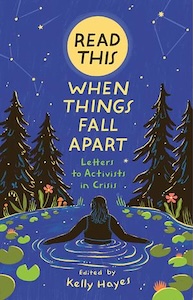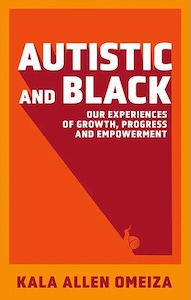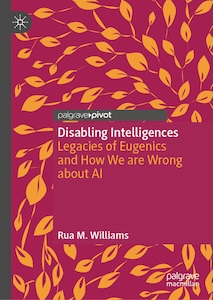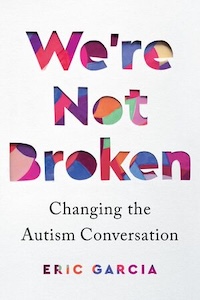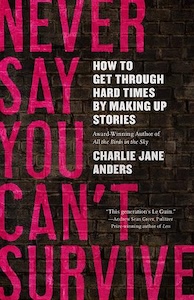“NeuroTribes: The Legacy of Autism and the Future of Neurodiversity”
by Steve Silberman
What is autism? A lifelong disability, or a naturally occurring form of cognitive difference akin to certain forms of genius? In truth, it is all of these things and more—and the future of our society depends on our understanding it. WIRED reporter Steve Silberman unearths the secret history of autism, long suppressed by the same clinicians who became famous for discovering it, and finds surprising answers to the crucial question of why the number of diagnoses has soared in recent years.
Going back to the earliest days of autism research and chronicling the brave and lonely journey of autistic people and their families through the decades, Silberman provides long-sought solutions to the autism puzzle, while mapping out a path for our society toward a more humane world in which people with learning differences and those who love them have access to the resources they need to live happier, healthier, more secure, and more meaningful lives.
Along the way, he reveals the untold story of Hans Asperger, the father of Asperger’s syndrome, whose “little professors” were targeted by the darkest social-engineering experiment in human history; exposes the covert campaign by child psychiatrist Leo Kanner to suppress knowledge of the autism spectrum for fifty years; and casts light on the growing movement of “neurodiversity” activists seeking respect, support, technological innovation, accommodations in the workplace and in education, and the right to self-determination for those with cognitive differences.
Review
This is a really good book, and wish I’d read it sooner. I really liked the way the author went through the history of Autism research from its initial diagnosis in wartime Austria, all the way to the current autism rights movement. There was a lot of interesting and important information. I want to note here that there are two versions of this book. In the original version, published in 2015, Silberman discusses Hans Asperger’s history of working with individuals who had a seemingly milder version of autism without being able to confirm whether or not Asperger was a Nazi and if Asperger agreed with their eugenic views. This is the version I read which was the only one available as an ebook from Kobo. There is a reprint edition from 2016 that does address this and is the one available on Amazon. Silberman also discussed the issue with Maxfield Sparrow at the blog Thinking Person’s Guide to Autism: On Hans Asperger, the Nazis, and Autism: A Conversation Across Neurologies. At some point I will buy that version and read it as well.
I like the way the book was broken up into different chapters with different focuses though it did require some repetition and referring back to different points in time. The chapter on Science Fiction and the rise of Science Fiction fandom was particularly interesting to me. Silberman spent a lot of time discussing how fans are often Autistic individuals seeking to belong and that being in fandom supports that need. Other groups around technologies had similar situations such as Ham Radio operators. The creation of the movie “Rain Man” is discussed along with the various individuals who Raymond is based on. While I do have my own opinion about that movie, after reading this book I understand that it did create an opportunity for people to see an autistic individual and be more understanding in various situations.
Throughout the book I felt as though Silberman did a good job explaining how parents were desperate for answers. In most case the parents were trying to find ways to help their children. The biggest problem was lack of information and what information there was primarily negative. Often though parents did keep trying to find better solutions and for many there was a shift towards supports and accommodations.
In the later chapters Silberman talks about the ways Autistic adults started taking control of their own lives and the narrative around their needs. The rise of various groups around the Autistic community and the eventual creation of the Autistic Self Advocacy Network. The key was that these groups were run by Autistic individuals themselves instead of only parent groups. The effort by Autistic adults to be seen and heard is important as they’re primally focused on ensuring they receive the supports they need. Often the idea of supporting individuals is overlooked in the push for a cure for Autism.
Overall, I do believe the book works for what the author was trying to do – present the history and potential future of the Autistic community. What is needed is more respect and understanding and acceptance for all Autistic individuals, no matter their support needs. While Silberman does try speak to the fact that other disabilities are included in the neurodiversity movement the focus was mostly on Autism. To that point I think the title is a little misleading and probably shouldn’t have used the word tribe in it for various reasons. The history is important to know especially in today’s political climate. With people like RFK Jr and Dr. Oz around we’re on the verge of taking huge steps backwards because they only see the negatives. And if we’re not careful they will convince people that is the only truth.
Eric Michael Garcia’s “We’re Not Broken: Changing the Autism Conversation” (which I reviewed previously) works as a good follow up to fill in some gaps such as how gender and race influence both diagnoses and acceptance. It’s also written more directly from the perspective of Autistic individuals, in part because Garcia is himself autistic, while Silberman is not. Garcia referenced “NeuroTribes” multiple times throughout his book and has said that he couldn’t have written his book without Silberman’s book existing. Naturally, both spoke with some of the same individuals – one such family were the Rosas – Leo Rosa is autistic and his mother, Shannon, currently edits the blog Thinking Persons’s Guide to Autism.
Steve Silberman passed away August 29, 2024 and many in the community morned his passing. You may be interested in reading this conversation at Thinking Person’s Guide to Autism: Remembering Steve Silberman: TPGA Editor Shannon Rosa on the Noncompliant Podcast.
Book Details
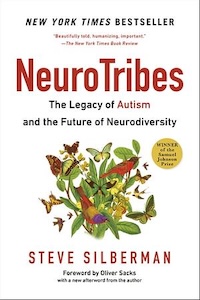
- Author’s Website
- Steve Silberman (Wikipedia)
- Publisher / Date
- Harvest Publications, August 2021
- Genre
- Essay Collection
- Page Count
- 400
- Completion Date
- April 28, 2025
